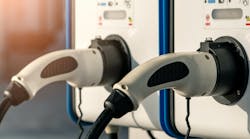It’s been interesting to see the response to Run on Less–Electric Depot. In case you missed it, NACFE’s most recent iteration of the Run focused on fleet depots with at least 15 battery-electric trucks.
One key highlight of the Run was that a BEV traveled more than 1,000 miles in one 24-hour period. That’s pretty impressive.
Still, some industry groups and spokespeople like to say semi-trucks are not ready for electrification, as if long-haul is the only paramount issue. ACT Research recently reinforced that roughly 60% of annual OEM builds for Class 8 on-road tractors are sleeper cabs, meaning the other 40% are day cabs, a relatively consistent number over the years.
See also: Zap! Depot operations show electric truck potential growing
That kind of “logic” makes no sense.
Trucking segments ripe for electrification
Let me remind you of a few key takeaways from Run on Less Electric conducted in 2021—findings validated in the most recent Run on Less Electric–Depot.
Terminal tractors
Mileage for the three terminal tractors in that Run ranged from 14 to 29 miles per day, and the trucks operated at speeds between 15 and 25 mph. The total population of terminal tractors in North America is estimated to be 50,000. Based on the duty cycle and frequency of intermittent charging, fleets may be able to reduce the battery pack size, which will lower the overall cost of the vehicle without sacrificing performance.
If 100% of the terminal tractors in the U.S. and Canada were electrified, it would require approximately 726 GW of electricity for charging and result in the avoidance of 929,687 MT CO2e annually (e equals carbon dioxide equivalent.)
That seems like a pretty significant savings to me. NACFE considers terminal tractors one of the best, if not the best, paths for a heavy-duty tractor fleet to learn about and implement BEVs in a fleet operation. This segment of the market is 100% electrifiable today.
See also: Some small fleets lean into EV benefits as CARB rules loom
But terminal tractors are not the only place where battery electric vehicles make sense today.
Vans and step vans
Another good use case is vans and step vans. Multiple sources indicate that 50% to 60% of active registered vehicles are in Class 3 to 6—some 4.2 million in the U.S. and 0.53 million in Canada. NACFE’s conservative estimate of active Class 3, 4, 5, and 6 vans and step vans in the U.S. and Canadian market is approximately 4.2 million vehicles. Three trucks in the Run were vans or step vans, and mileage per day varied from a high of 92 to a low of 16.
If 100% of the vans and step vans in the U.S. and Canada were electrified, it would avoid 43,476,632 MT CO2e annually (e equals carbon dioxide equivalent)—an even more significant number. NACFE believes 100% of this market is electrifiable today.
Medium-duty box trucks
We can also look at the electrification of medium-duty box trucks. According to ACT Research, Class 6 and 7 truck sales have decreased as a percent of all new commercial trucks for the past 20 years. Operationally, medium-duty box trucks are used in return-to-base duty cycles for urban and last-mile deliveries. Their service territory is usually within a 50-mile radius of their home base or depot, and they typically travel less than 100 miles a day. Three of the 13 trucks in the Run were medium-duty box trucks, and their mileage per day varied from a high of 112 to a low of 27.
NACFE believes 100% of that market segment will embrace electrification, though some applications within the duty cycle will be easier to electrify than others with more complex operations. When the simpler box truck portion of this market segment, about 380,000 trucks in the US and Canada, is electrified, it will avoid 7,681,707 metric tonnes (MT) of CO2e annually.
Heavy-duty trucks in regional operations
Finally, let’s look at heavy-duty trucks used in regional haul operations. Four of the 13 vehicles in RoL-E were battery electric heavy-duty regional haul tractors: As Run on Less–Electric concluded in September 2021, NACFE predicted 70% of this market segment was electrifiable. Given the more detailed analysis, interviews with industry experts, and further research for this report, we now consider this market segment to be 50% electrifiable today.
With lower average daily miles of 150, this avoids nearly 29.4 million metric tonnes of CO2e annually (e equals carbon dioxide equivalent). NACFE estimates the entire CO2e to be eliminated by this segment at an average of 250 miles per day to be 97.8 million metric tonnes.
Call me crazy, but the total CO2 that can be saved makes it worthwhile to pursue getting electric trucks into those market segments. We can start the journey to a clean transportation future where it makes the most sense. Then, as the technology improves, we can move to the other 60% of the market and work on proving the naysayers wrong by electrifying parts of that long-haul segment as well.




